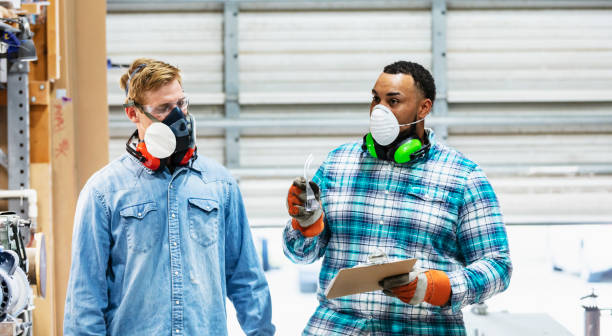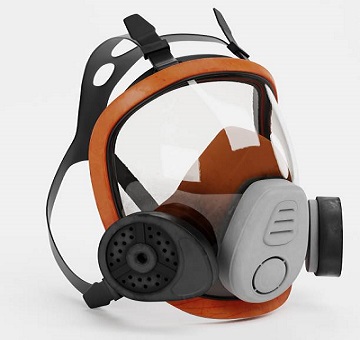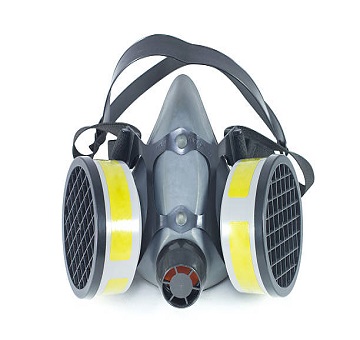Whether in life or at work, we may often hear masks and respirators, but do you know the difference between masks and respirators? This can be a perplexing question for people who need respiratory protection. Keep reading this article and let's explore together!

The mask has two earrings, which can be worn on the ears to fix the mask, cover the mouth and nose, and are relatively loose to use. Masks are a barrier to liquids such as splashes, droplets and sprays of bodily fluids. Wearing a mask can block droplets and other infectious substances from the mask user. Typically, masks are worn to prevent the spread of the common cold and flu. Used as one-way protection, recommended as a precaution to protect those around you.
A respirator is a tight-fitting face mask designed to help reduce the wearer's breathing exposure to airborne contaminants such as particles, gases or vapors. Filters the air (half and full) that the wearer breathes at the specified efficiency level of the respirator or filter/cartridge. Choosing the right respirator and using it correctly creates a face seal that provides two-way protection.
There are three different categories of respirators.
· Disposable (usually N95 and medical).
· half-face
· full-face
Disposable respirator
The disposable respirator has two straps, a metal nose mask and a safety label, and is NIOSH certified. Disposable respirators are often used for medical staff and those who work potentially exposed to harmful substances in the air, such as medical staff, firefighters, police, emergency rescuers, etc. Disposable respirators can provide high efficiency when worn correctly.
Half-face/full-face respirator
This type of non-disposable respirator has two straps, a mask, and two cartridges/filters. Half-face respirators cover the nose and mouth area, while full-face respirators cover the entire face. Both respirators create a face seal and filter the air the wearer breathes. An obvious difference between disposable respirators and half/full face respirators is that in half/full face respirators, the wearer can meet various safety requirements through cartridges and various filters without having to completely replace the mask.


Respirators protect users in different ways: air-purifying respirators (APR) and supplied air respirators (SAR).
Air-purifying respirators remove pollutants from the air. Particulate respirators that filter airborne particles and "gas masks" that filter chemicals and gases are both air-purifying respirators. Supplied-air respirators provide wearer protection with clean, breathable air from other sources, including air respirators that use remotely compressed air and self-contained breathing apparatus (SCBA).
Knowing the difference between a face mask and a respirator and having more awareness of both items, you can determine whether you need to wear a mask or a respirator by understanding the dangers you will face in your work environment. If you need to wear a respirator to provide respiratory protection, choose what size and style of respirator are best for you.
T-safety offers a wide range of personal protective equipment, including face shields and respirators. If you are interested in our products, you can consult us for more information.
Copyright © Hebei Sinotools Industrial Co.,Ltd. All Rights Reserved | Powered by  Sitemap
Sitemap